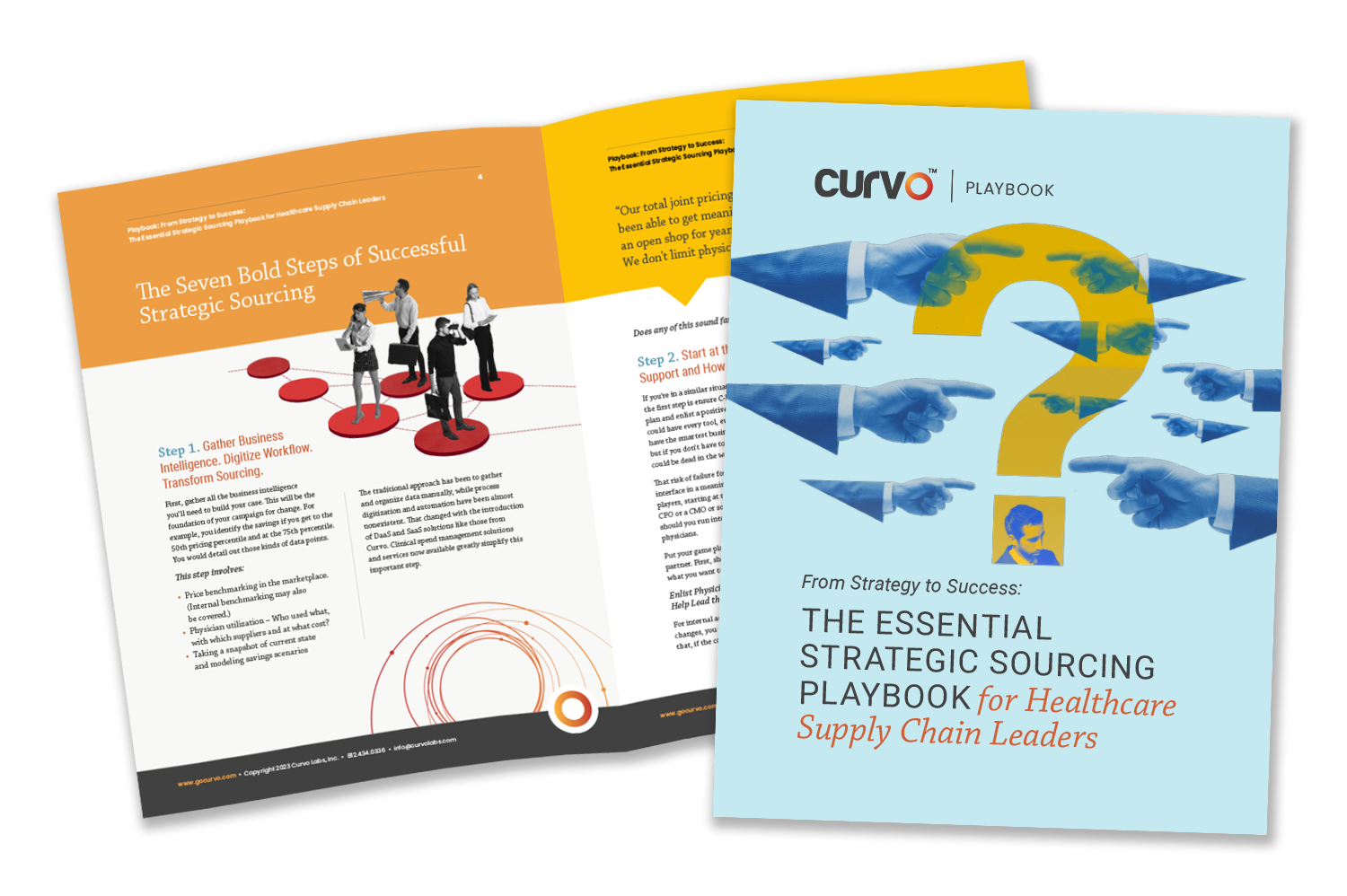Home Blog Strategic Sourcing FAQs for the Fearless Supply Chain

Strategic Sourcing FAQs for the Fearless Supply Chain
Best Practices Strategic Sourcing
Strategic sourcing for high-ticket physician preferred items (PPI) gets complicated quickly. Don’t get confused or overwhelmed. Let these questions and answers help you move faster to fearless sourcing.
- When should I show physicians their utilization data?
- What is the best step to digitize for more strategic sourcing?
- What should I do about possible supplier interference?
- Why is it important to monitor savings accrual?
- What sourcing metrics make sense across multiple facilities?
- How can technology help when supply chain has limited resources?
FAQ 1 - When should I show physicians their utilization data?
It’s recommended that you not show PPI utilization data to the surgeon community without winning over the champions first, especially your physician champion. You could end up feeling like the target of a feeding frenzy if clinicians find one hole in your analysis.
It’s recommended that you not show PPI utilization data to the surgeon community without winning over the champions first, especially your physician champion. You could end up feeling like the target of a feeding frenzy if clinicians find one hole in your analysis.
Only when you have buy-in from all your champions should you go to the physicians with the whole data story. Lay out your case and demonstrate back up for what you're asking.
For example, maybe you just want to get to the 50th pricing percentile on a hip project. You haven't made a run at this category for a while, and you want to get to the market midpoint. You tell the physicians that's all you're asking; this is why, and can you support us?
FAQ 2 - What is the best step to digitize for more strategic sourcing?
Part of what makes strategic sourcing “strategic” is thoughtfully collecting, building and evaluating multiple options to choose the most beneficial bid for the healthcare organization. With so many tasks in every contract event workflow, where do you start digitization for the most value? Where is digitizing most helpful in terms of improving or accelerating a specific workflow point?
The most impactful step to digitize is evaluating supplier response scenarios for PPI contracts. This means using technology to simplify the overly manual processes of finding, adding, cleaning and manipulating product, case and use data.
Complex PPI purchases like implants make up a big chunk of most healthcare supply chain budgets. So digitizing PPI workflow adds significantly to operational savings downstream, as well as quality care outcomes.
FAQ 3 - What should I do about possible supplier interference?
Now that you’ve negotiated pricing internally, an aggressive supplier may still try to upsell. Problems could arise if physicians leak the potential change to suppliers.
The solution is to talk to your C-suite champions first and get them committed to your game plan. Physicians can be asked to not torpedo this effort by engaging with suppliers to discuss pricing.
FAQ 4 - Why is it important to monitor savings accrual?
Strategic sourcing for PPI products is a continuous process of evaluating and re-evaluating, and that continues after contracts are signed. Priority one is making sure the price sheet you agreed to is what gets implemented. Don’t assume. Mistakes happen.
Establish a few ongoing metrics to properly monitor and optimize the contract process. The top success metric will be: how much money do we save, but don’t wait until the contract comes up for renewal to check compliance history. Check savings accrual every month.
For example, you’re shooting for the 50th percentile pricing on a hip joint. The physicians get behind that, so you find suppliers who agree to that percentile price. With the new price points and same utilization, you target about a million dollars in 12-month savings, which works out to be about $83,000 a month.
That accrual rate should return your million dollars in savings over the course of the contract, but someone has to keep an eye on it. Monitor to make sure you’re hitting that $83,000 a month, so at the end of 12 months, you've got your million. Don't wait to take a look until the end of the contract.
“From Strategy to Success: The Essential Strategic Sourcing Playbook for Healthcare Supply Chain Leaders.”
FAQ 5 - What sourcing metrics make sense across multiple facilities?
After a successful contract, make sure to monitor compliance across all your facilities. Conduct internal benchmarking with physicians in your healthcare network and look for outliers that destroy savings. Physician utilization data helps with this task.
For example, take the average case cost. Say 19 of the 20 total joint surgeons come out between $4,600 and $4,900 per case, but that 20th physician is at $5,600 per case. What are they doing that's so different from everyone else? Maybe they're using a different supplier. Maybe they're using premium implants – there could be other reasons.
You would engage with that physician and socialize that benchmark information. The conversation might go something like this:
“We noticed your average case costs are $5,600 a case, whereas everyone else is around $4,600 to $4,900. It looks like you're using double the amount of cement as everybody else, and you only use a premium product. When you go to use this type of case, are you getting a better outcome? Is that necessary? Do you realize it costs that much more?”
Sometimes the surgeon doesn't even realize that’s happening. Often it’s just a matter of calling it to their attention to get the behavior modification you seek.
FAQ 6 - How can technology help when supply chain has limited resources?
Hundreds of healthcare networks depend on Curvo technology for data enrichment, sourcing analytics, automation and services. The Curvo Platform brings all these together in a user-friendly, end-to-end environment for strategic sourcing.
If you want to continue learning, we recommend this playbook: “From Strategy to Success: The Essential Strategic Sourcing Playbook for Healthcare Supply Chain Leaders.”
What other questions do you have about strategic sourcing initiatives? Let’s set up some time to talk about where you want to take your strategic sourcing initiative.

